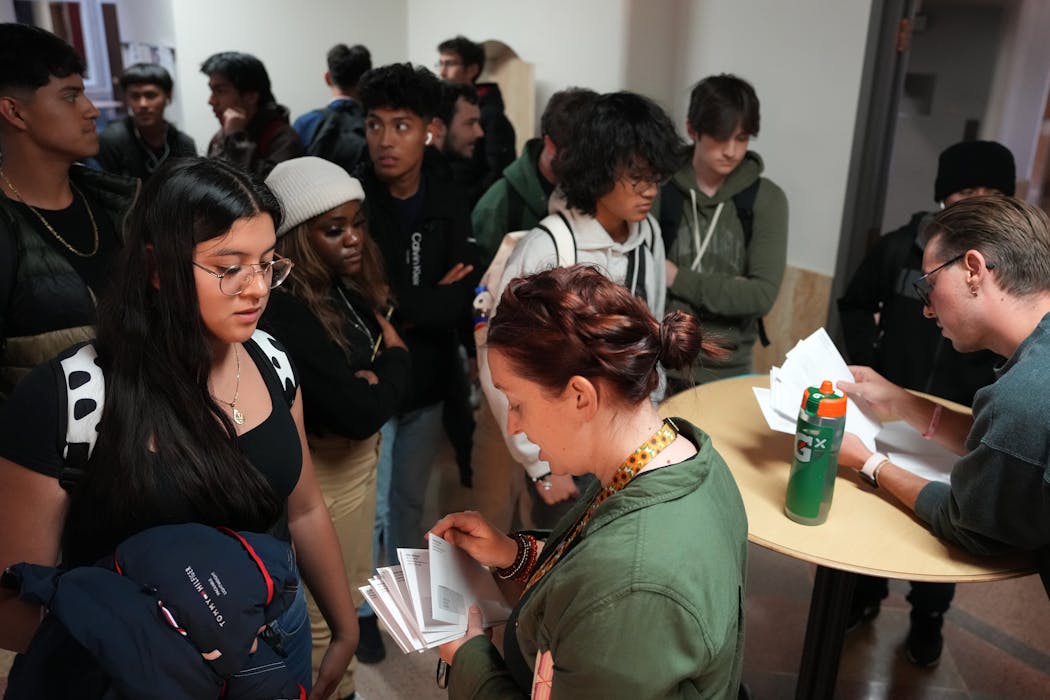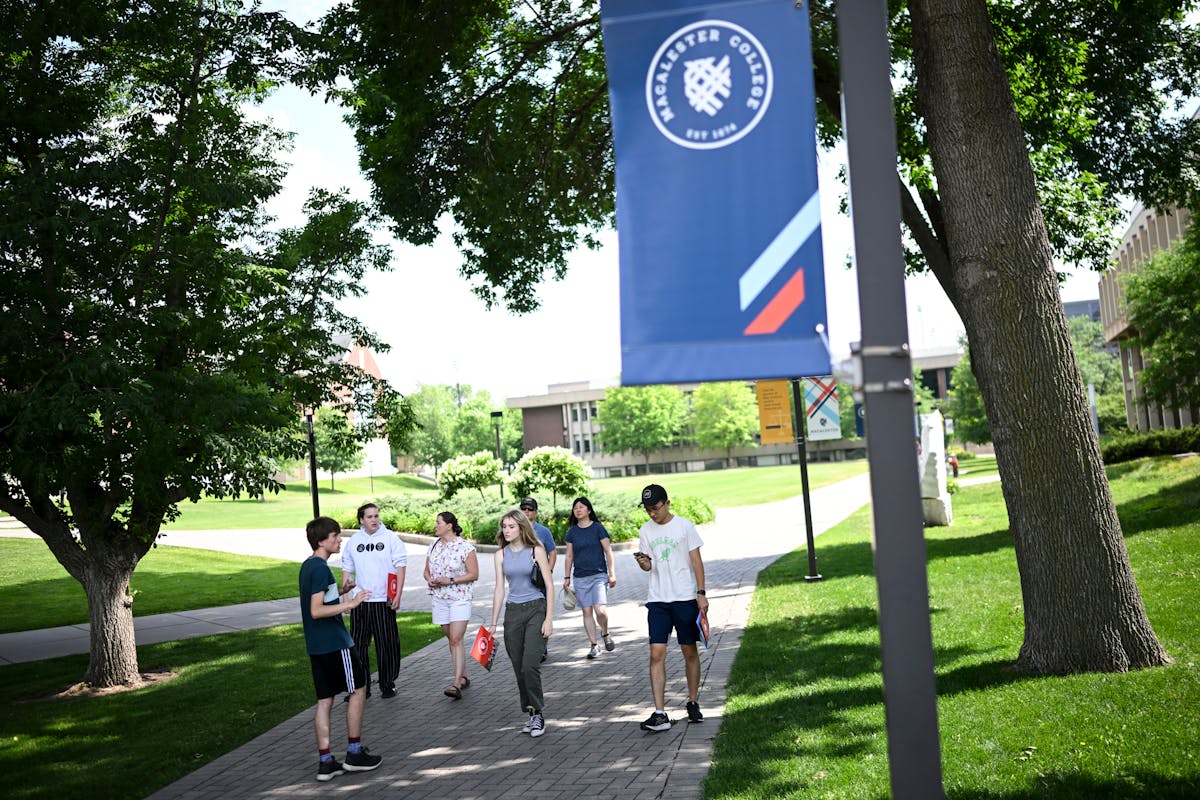AUSTIN, Minn. — Beza Zerefa was stunned when her principal told her she'd gotten into college. She hadn't even applied yet.
"I didn't know it was that easy," said Zerefa, a senior at Austin Online Academy who wants to study nursing after graduation.
A new program called Direct Admissions is changing the way Minnesota high school students make their college decisions and the way universities decide whom to admit and reject. Before students start writing essays or asking for letters of recommendation, seniors in participating school districts receive a letter listing the colleges and trade schools where they meet the criteria for admission.
"Direct Admissions is really looking at enticing or convincing the student who doesn't think they can get into college to consider college," said Meredith Fergus, director of research for the Minnesota Office of Higher Education, which runs the program.
The push comes at a critical time for Minnesota colleges, which have been losing students to nearby states. Recruitment is expected to get more competitive as the pool of high school graduates shrinks, due in part to changes in birth rates years ago. And state officials hope that by streamlining the application process and offering new scholarships, they can make the process less daunting and chip away at long-standing racial disparities in higher education.
Part of the goal, Fergus said, is to "reduce self-selection bias where they opt out of going to college completely."
"It's not a question of, 'Will you get in?'" Fergus said. "You will. So what do you want to do when you get there?"
Direct Admissions expands
This is the second year Minnesota is running the Direct Admissions program. Fifty-five colleges — two-year and four-year, public and some private — and 112 high schools now participate. The state is also launching a new partnership with College Possible, a St. Paul-based nonprofit, to send letters to more students.
Some colleges still ask students to submit applications to move further in the process. Others, such as Augsburg University, are largely ditching them.
Applying to Augsburg used to take some students hours. They gathered transcripts and test scores, asked teachers for letters of recommendation and wrote essays pitching their qualifications. Now, the admissions office says the process takes most students closer to 7 minutes to answer some short questions and provide contact information.
"Honestly, the students that were spending the most time on it are the students who were the most phenomenal students" and who were likely to get admitted based on their grades and other achievements anyway, said Stephanie Ruckel, director of enrollment systems and analytics at Augsburg.
Of the 3,225 students Augsburg admitted during the first year of Direct Admissions, 2,945 came in through the program. Students who didn't meet the grade requirements to be automatically admitted had the chance to answer two short questions explaining the challenges they faced and where they found success in high school. Another 280 students were admitted through that process.
Ruckel estimated that the change freed up about 1,300 hours of admissions counselors' time, making it easier for them to answer questions about financial aid, visit high schools or help students with disabilities develop plans for the new semester.
"It's not a mad dash to the finish line," she said. "It's just a smoother ramp and transition to college."
The Minnesota State system of colleges and universities is experimenting with a similar change this year. It's asking students who received a Direct Admissions letter to reply specifying which schools and programs interest them — and then colleges and universities follow up with more information.
Ali Pickens-Opoku, the system's director for strategic enrollment management, hopes the change will give students more time to think about which careers and programs best suit their needs.
"We don't have to wait for the student to make it through the application process. We've been able to really take one big step of that process off a student's plate," she said. "We wanted them to be excited about and enjoy their senior year."
The big reveal
Austin Online Academy Principal Jessica Cabeen called her students into one of the district's auditoriums for an assembly earlier this month. On the way in the door, each student's guidance counselor handed them an envelope with their name on it.
"Nobody's in trouble," Cabeen told the crowd of students who take classes through the public school district's online program. "This is a surprise."
Inside the envelope was a letter listing schools where the student could be admitted. But counselors told them not to peek inside just yet.
Students saw a video from the governor congratulating them on their accomplishments. School staff talked about what students could do after they read the letters: They could follow up with all the schools, none or some — and know that at each one they'll be granted admission.
Next came the big reveal. Cabeen told the students to open their envelopes. Some students cheered. Smiles crept across others' faces.
"This could really help students that don't know. They could have the courage to know they could get in," said Leslie Sandoval Reyes, a senior who's thinking about attending a four-year college to study psychology.
Araiza Maldonado Basilio, a senior interested in studying education, "was scared I wasn't going to get in anywhere."
When she opened her letter, she saw 29 colleges listed. "It's really exciting," she said.
Grandmother guilty of neglect that led to 7-year-old girl dying on Christmas on Red Lake Reservation
Minnesota bankruptcy law firm files for bankruptcy after losing fight with another bankruptcy firm

Minnesota mother of 2 won $3.1 million Lotto America jackpot by playing family birthdates

St. Paul First National Bank building owner selling entire downtown portfolio




